AMD Frame Pacing Explored: Catalyst 13.8 Brings Consistency to Crossfire
by Ryan Smith on August 1, 2013 2:00 PM ESTCatalyst 13.8 Results in Summary
For this article we’ve decided to do things a bit differently and lead in with a summary of our results, rather than starting with detailed results and then going to a summary. Based on past feedback most of you want to quickly know whether this works at all and how well it works, which is something we can quickly cover first before diving into individual games.
We’ll start with the graph that is of the most importance: delta percentages on a 7990, comparing Catalyst 13.6b2 to Catalyst 13.8b1 with frame pacing enabled.
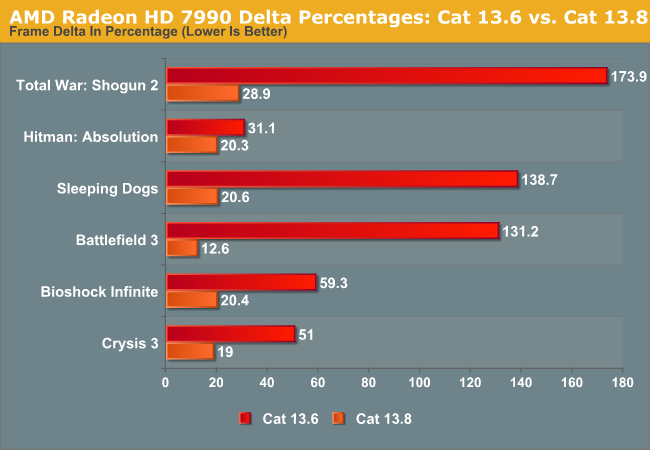
The results, quite frankly, speak for themselves. In roughly half of our 6 games AMD had absolutely absurd frame pacing on Catalyst 13.6. Total War, Sleeping Dogs, and Battlefield 3 all had massive pacing issues that were the result of second frames coming far too soon after first frames, leading to a high instance of “runt” frames – that is frames that are only shown for an incredibly short period of time before being replaced with a newer frame. These are the games where micro-stuttering and/or the feeling of lower frame rates would be the most apparent.
Earlier we decided that our cutoff would be 15%-20% for an “acceptable” range for delta percentages on a multi-GPU setup, and with the exception of Total War: Shogun 2 (the only non-action game in this collection), AMD has just managed to hit that. How smooth this is going to be perceived is going to vary on a person-by-person basis, but this is right where we’d say micro-stuttering and other issues become generally unnoticeable.
For the more visually inclined, we’ve also quickly cooked up frame time graphs in FCAT showing the two 7990s. The full series is below, but we’ll print in full the Total War: Shogun 2 graph in full since it was one of the bigger problem cases for AMD’s cards without frame pacing. Shogun doesn’t have any scene transitions, but it does have some snap camera movements that leads to a clear separation between scenes. In each scene we can clearly see the much lower variability with Catalyst 13.8 with frame pacing turned on, as opposed to 13.6 with frame pacing turned off.
Similarly, turning off frame pacing results results in Catalyst 13.6-like behavior, with much higher variability compared to having frame pacing turned on.
Moving on, the next question on most readers’ minds will probably be performance. What’s the performance sacrifice for using this new frame pacing mechanism? AMD said that the performance hit should be non-existent, and strictly speaking within Catalyst 13.8 that’s true, as we get identical frame rates with it on or off. However compared to Catalyst 13.6 we are seeing a performance regression.
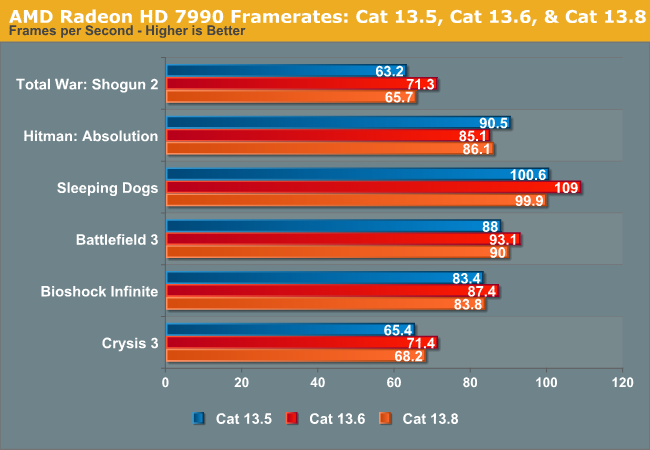
With the exception of Hitman: Absolution, performance is down across the board on 13.8 versus 13.6. The specific performance losses vary on the game, but we’re looking at 5-10%. However compared to the 13.5 launch drivers and again with the exception of Hitman AMD’s performance has held constant or increased. So at the very least when it comes to frame rates AMD is no worse off than they were at the launch of the 7990.
Our next summary graph is plotting the 7970GE against a pair of 7970GEs in Crossfire, to take a fresh look at AFR (Crossfire) versus a single GPU. Our editorial position has been and remains that we favor a single larger GPU over a pair of smaller GPUs when this approach is practical, and this chart demonstrates exactly why.
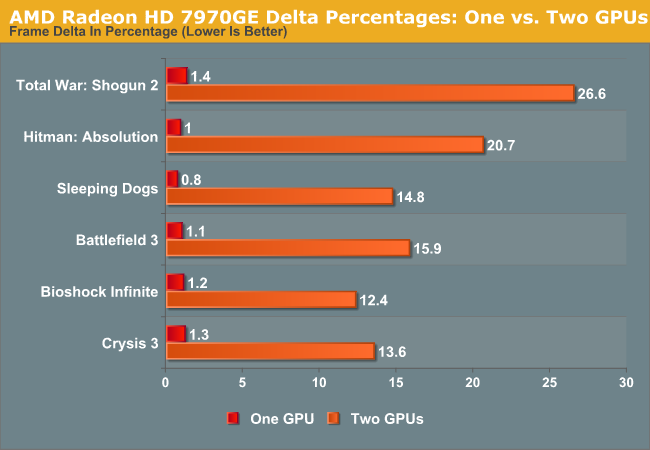
The delta percentages on the single 7970GE are all under 2%, versus 12%+ for the Crossfire setup. AFR simply cannot match the consistency of a single GPU at this time, which is why a high AFR is best left to being pursued after single-GPU performance has been exhausted.









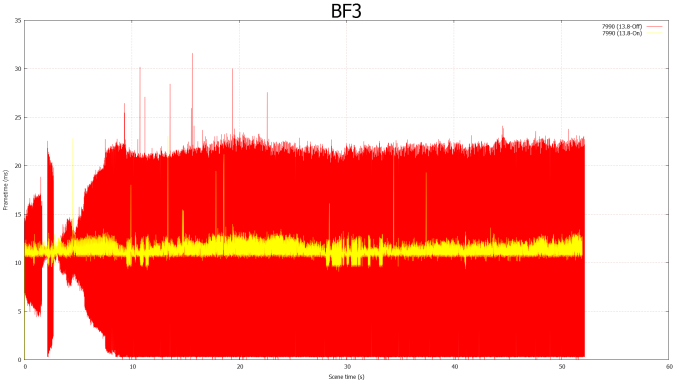
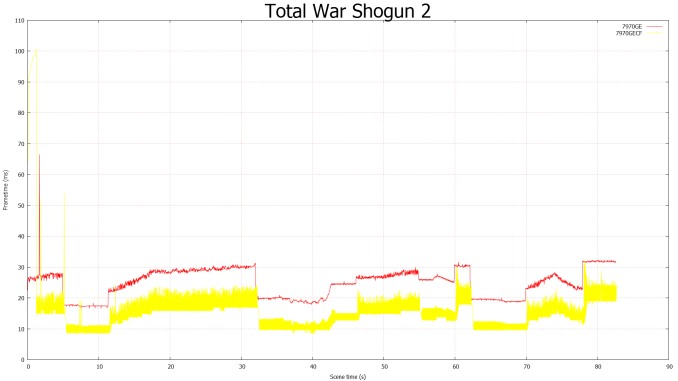














102 Comments
View All Comments
chizow - Friday, August 2, 2013 - link
Agree for the most part, but I wouldn't go as far to say boycott AMD, I'd say it's a good learning experience for AMD fans. In order to better their own products, they need to be forthcoming and honest about their experiences. If something's broken, demand a fix, don't sit there and dismiss or minimize the problem, or worst, deflect the issue toward the competition in denial. In the end, they just end up hurting themselves by gimping the products they enjoy.Will Robinson - Tuesday, August 13, 2013 - link
Please go back to spamming the comments section at Tech Report with your NVDA shill buddy Wreckage.Its beyond boring having to read it here too.
chizow - Friday, August 2, 2013 - link
Tom Petersen, Technical Marketing Director for Nvidia, has stated Nvidia has had built-in frame metering provisions since at least G80. Nvidia invented modern day AFR and they have clearly put a lot of thought behind it with the science to back it up. Every time you see them talk about AFR/microstutter/runtframes you see a lot of detailed technical slides and backup. Not so much from AMD. It should be obvious why Nvidia has had less of an issue with microstutter, they actually knew what they were looking to fix.http://techreport.com/review/22890/nvidia-geforce-...
"Nvidia's Tom Petersen threw us for a loop by asserting that Nvidia's GPUs have had, since "at least" the G80, a built-in provision called frame metering that attempts to counteract the problem."
Sabresiberian - Thursday, August 1, 2013 - link
Tech Reports is a competing company to AMD?While it is very good to see AMD making progress here, it is far from over for both AMD and Nvidia. Both companies have work to do to get frame rates to be consistent and high.
BryanDobbins - Saturday, August 17, 2013 - link
my neighbor's mom makes $72/hour on the internet. She has been unemployed for 7 months but last month her pay check was $19114 just working on the internet for a few hours. Read more on this web site... http://goo.gl/qHdAQ4Mondozai - Thursday, August 1, 2013 - link
Always liked Ryan's articles but I hope he gets to write more for this site in the future. For example, he should write more about mobile GPU's now that that area is gaining importance(this year we get to see PowerVR's newest generation, Rogue and next year we get to see Kepler in Tegra 5). Yet he didn't write anything on Tegra 5's Kepler story on this site even if he is the expert on GPU's.Doing a story on AMD drivers is all well and good but honestly, would like to see moar.
Ryan Smith - Thursday, August 1, 2013 - link
We have some in-depth mobile coverage scheduled for later this year, though I can't go into any more detail on it at this moment.mwildtech - Thursday, August 1, 2013 - link
Great write up! Thanks Ryan!SeeManRun - Thursday, August 1, 2013 - link
It wasn't totally clear from reading, but is there any point in upgrading to this driver if you have a single graphics card? It doesn't appear so.DanNeely - Thursday, August 1, 2013 - link
Release notes aren't out yet; but the 3rd page mentions that it adds full OpenGL ES 3.0 support as well as other not yes specified improvements. Most likely they include the obligatory few games to get a performance boost; but it's not purely a crossfire update.